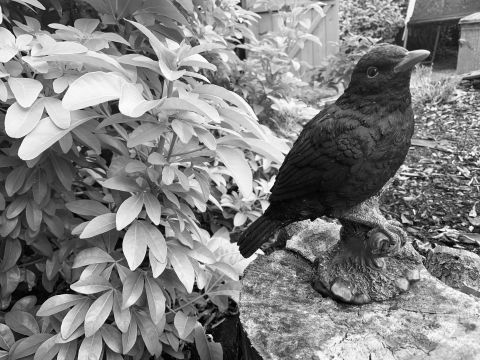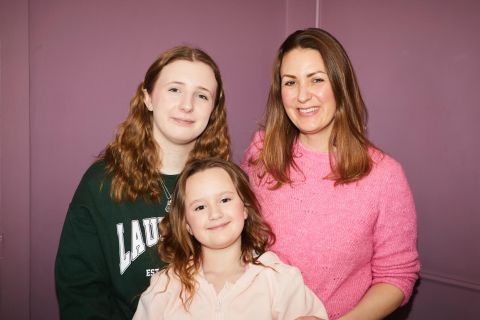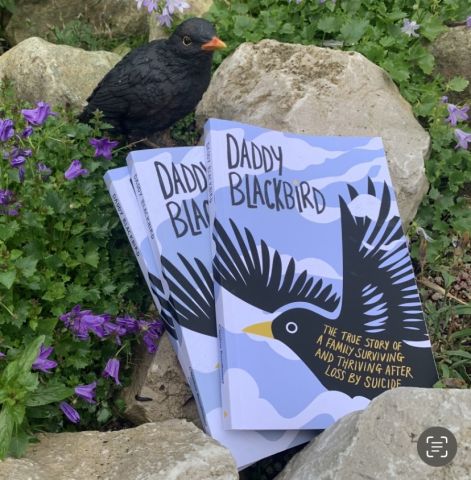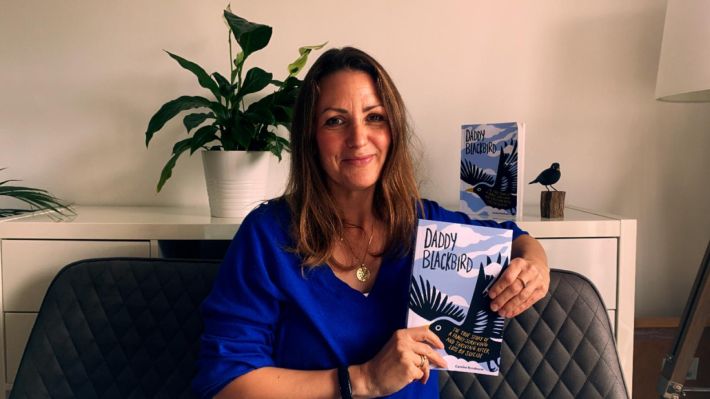Rebuilding hope after being widowed by suicide
September 2025
To mark Suicide Awareness Month, we asked writer and mentor Caroline Roodhouse to share some thoughts on how she rebuilt her life and rediscovered hope after her husband took his own life…
"It started just like any other day. 12 November 2018 began with Steve heading off to work while I busily got our girls ready for school and nursery. Evie was nine and Ada was just two years old. As he left, Steve confirmed he’d be collecting Evie from Cubs on his way home, as he always did on a Monday evening.
It was the last time I ever saw him.
He was found two days later, having taken his own life. He offered no clue that this was his intention or that he was struggling with his life. He left no note to explain why.
Navigating the hellish winter weeks that followed took every ounce of energy I could muster. Dealing with the police and providing all the information and statements I could was an incredibly intimidating experience. Our first Christmas without Steve was horrendous. People had no idea what to say to us. And before I could even take a breath, we faced the inquest two weeks later. We were in complete turmoil.
I felt lost, anxious, angry, isolated, fragile and exhausted. But more than anything, I felt entirely hopeless.
I was carrying around this heavy load of emotional baggage everywhere I went. I felt stuck in limbo, unable to accept what had happened and battling with deep feelings of resentment towards the situation and to Steve. I was permanently seething and constantly sad. My ability to trust people was gone. I hated hearing about the normal lives of other families, the holidays they were planning, and what they’d been doing at the weekend. I was existing in fight or flight mode, waiting for the next disaster to land on my doorstep.

The first few years after Steve’s suicide were unbelievably challenging, particularly when a global pandemic came along to test me even further. As time passed, though, I finally started to adjust to life as a knackered double parent and I began to see some tiny green shoots of resilience appear in my two grieving girls. I spotted small glimmers of light through the darkness. Despite this not being the life I had wanted, I started to see hope in the shape of a triangle, delivered – metaphorically and perhaps spiritually – to my door by a little blackbird.
My triangle of recovery

Our family dynamic had shifted beyond recognition. No longer a neat and tidy four, we had become a wonky little three, but I began to realise that this didn’t mean we were weak. The triangle is a formidable form – with its three sides and three points, it is the strongest shape of all.
Visualising this shape and all that it represented helped me to realise that my girls and me could survive, and even thrive one day, thanks to the strength we had between the three of us.
Granted new perspective by the passage of time, I began to form what I call my ‘Triangle of Recovery’, which involved three interconnected areas of my life:
The power of me – I dug deep to rediscover the strength I had in myself, build on what I already knew and develop the skills and experiences I needed for a happier, more hopeful future.
That involved a lot of elements – from investing in counselling and treatment for post-traumatic stress disorder (PTSD), developing mindfulness techniques and cognitive behavioural therapies (CBT), to joining a gym and sweating it out at regular bootcamp sessions.
I started gardening. I stopped drinking. I closed the door on people who drained me and I opened the door to people who lifted me up. I learned that asking for help was not a sign of weakness, but a courageous act of self-compassion.

I completed a diploma to invest in myself professionally. I read a ton of books about building emotional agility and creating new, positive thought patterns in my mind. And I even wrote my own book, Daddy Blackbird,which I published last year.
There’s a quote I love to share, from a brilliant Australian comedian called Hannah Gadsby, and she says, “there’s nothing stronger than a broken woman who has rebuilt herself”. This really does help to sum up the power of me.
The power of my children – I acknowledged and celebrated the resilience, courage and tenacity that my daughters were showing to the world.
I watched my oldest child Evie as she struggled at school, hearing upsetting language around the subject of suicide to then go on and create a story and an animation that was shared with schools, charities and workplaces about the importance of having greater consideration around the way we communicate on this topic. In fact, she has won the Inspirational Story category at the national Mental Health Awards and was recognised at the Women in Change Awards, and I could not have been prouder of her.
I’ve seen my younger daughter, Ada, growing into a kind, strong and emotionally intelligent young person too. When she was just seven years old, she stopped me on the school run to announce that: “Men don’t grieve, men don’t cry. They should because otherwise they live shorter. They need to let the emotions out, so they don’t die.” An incredibly sad thing to hear from your own child, but remarkably astute at the same time too, and a statement that demonstrated to me how far she had come with her understanding of a very complex and grown-up situation.
The power of my community – I embraced the right people, learned from others and became part of something bigger, brighter and stronger.
One of the first things I did was to join the peer support network WAY Widowed and Young. Receiving the regular newsletters and reading about how WAYers were becoming empowered individuals by getting involved in local activities, charitable events and national campaigns gave me a huge amount of strength. Hearing people’s stories on the Facebook group was a game changer for me too, and I joined many conversations in my own space and time that brought different perspectives to my life. By becoming part of this community, I realised I was not alone in my grief.
Beyond this, I connected with dedicated individuals, groups and charities around the world, who are doing amazing things in this space to tackle suicide and the stigma that exists around it.
I’ve made some great friends too, who have helped to carry my girls and me to this brighter place we find ourselves in today.
Defining your own shape
Through all the awfulness of loss, I have learnt the importance of accepting life as it is, rather than ruminating on what it once was or fighting against what it has become. Acceptance has led me to freedom – freedom to define my own shape and find what works for me and my little trio.
I urge anyone dealing with trauma and loss to set aside what you think things should be like and define your own shape instead. It’s a liberating and hope-filled thing to do."

Caroline Roodhouse is a double parent, mentor, internal communications consultant, public speaker and best-selling author of ‘Daddy Blackbird: the true story of a family surviving and thriving after loss by suicide’.
Caroline also shares weekly moments and memories for those who want to hear more through Substack.

Your donations are always welcome.
Donate